Rulai, Inc.
Personalizing virtual assistant demos
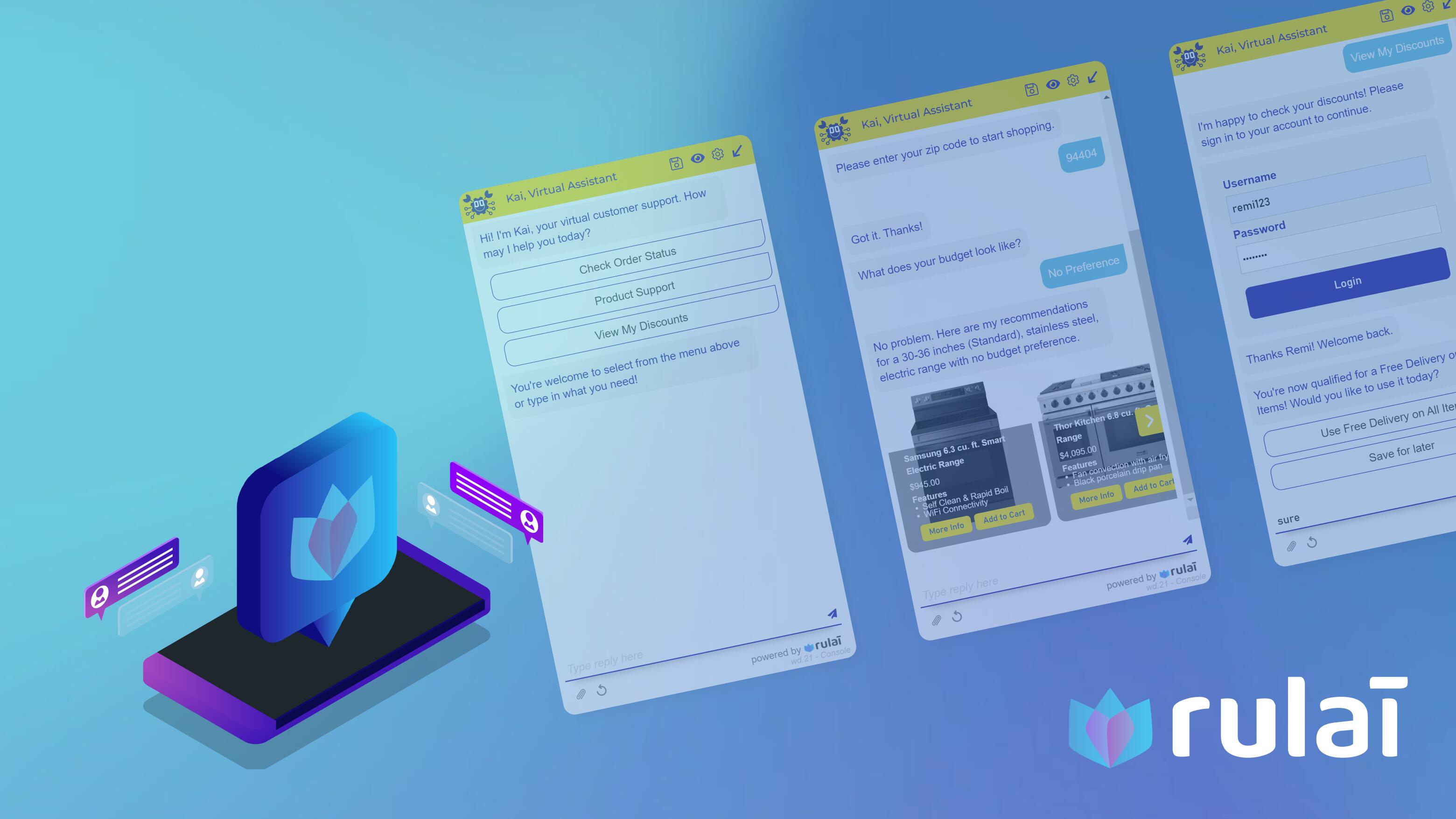
Integrated 60+ conversational AI features into a new demo system, improving customization to win more customer and partner opportunities.
Integrated 60+ conversational AI features into a new demo system, improving customization to win more customer and partner opportunities.
sole designer at a low code platform
Rulai is a low-code AI Virtual Assistant platform for businesses.
Through the summer of 2022, I joined Rulai as the sole designer. To tackle the inquiries from businesses in various industries and sizes, I designed a new live demo system that allows prospects to explore the Virtual Assistant Studio in their own desired way. They can ask about a specific use case, and interact with the tool to see its corresponding features being built in action.
it was difficult to understand audience interests without the ability to talk to them
Working with so many conversational AI features, I had a problem with knowing which audience might be most interested in using what features. They may want virtual assistants to do totally different things, and I did not have the authority to meet Rulai's current customers.
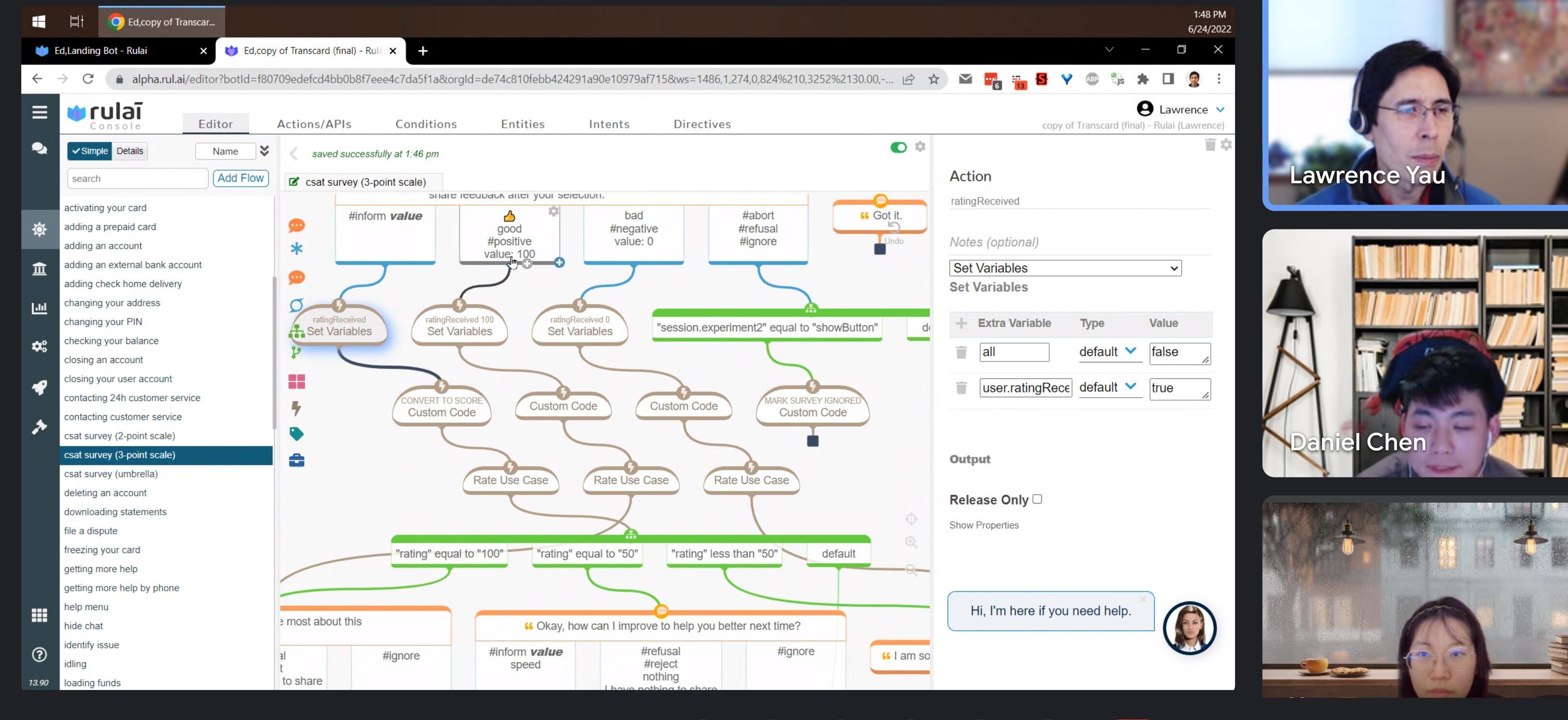
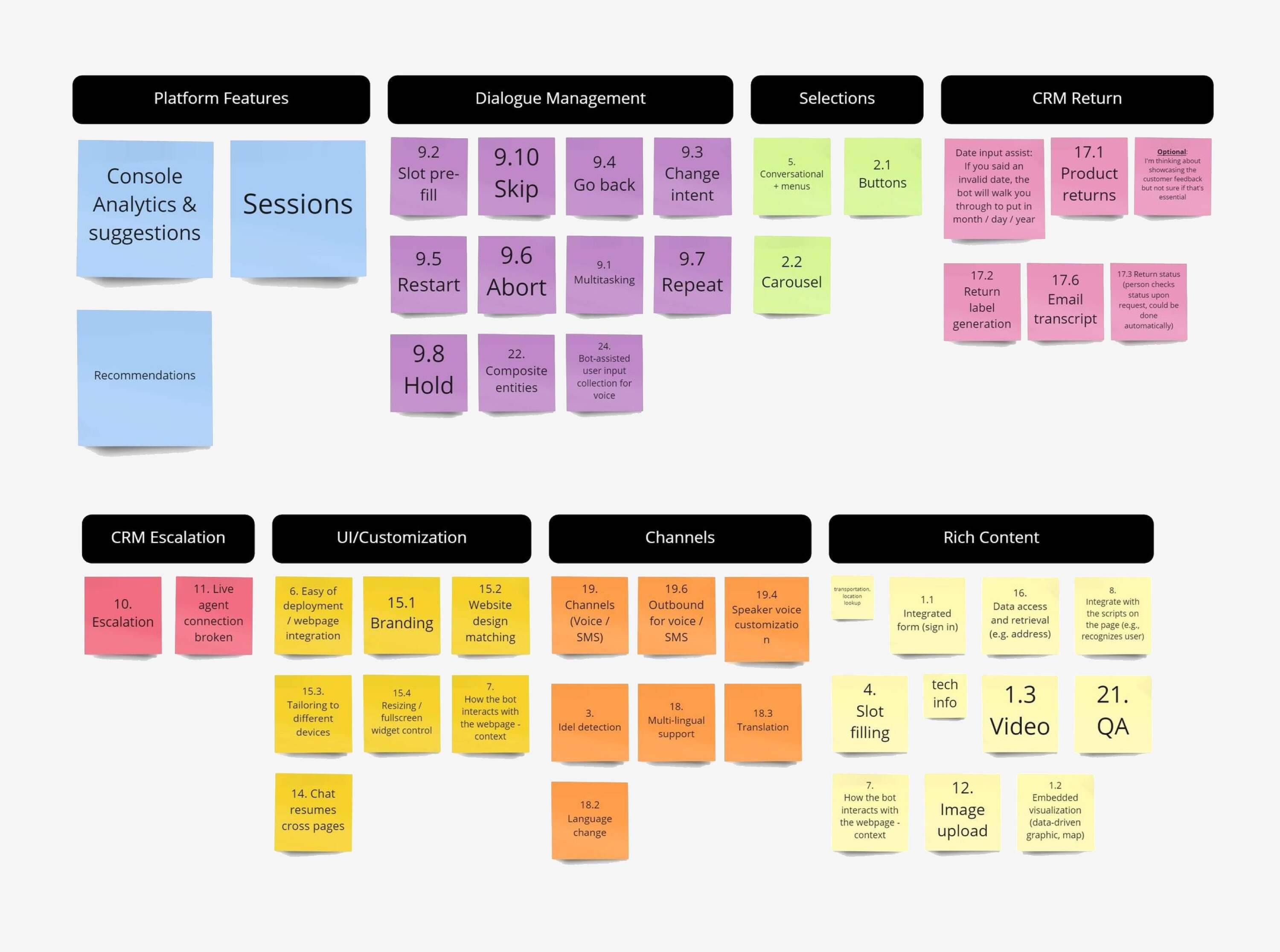
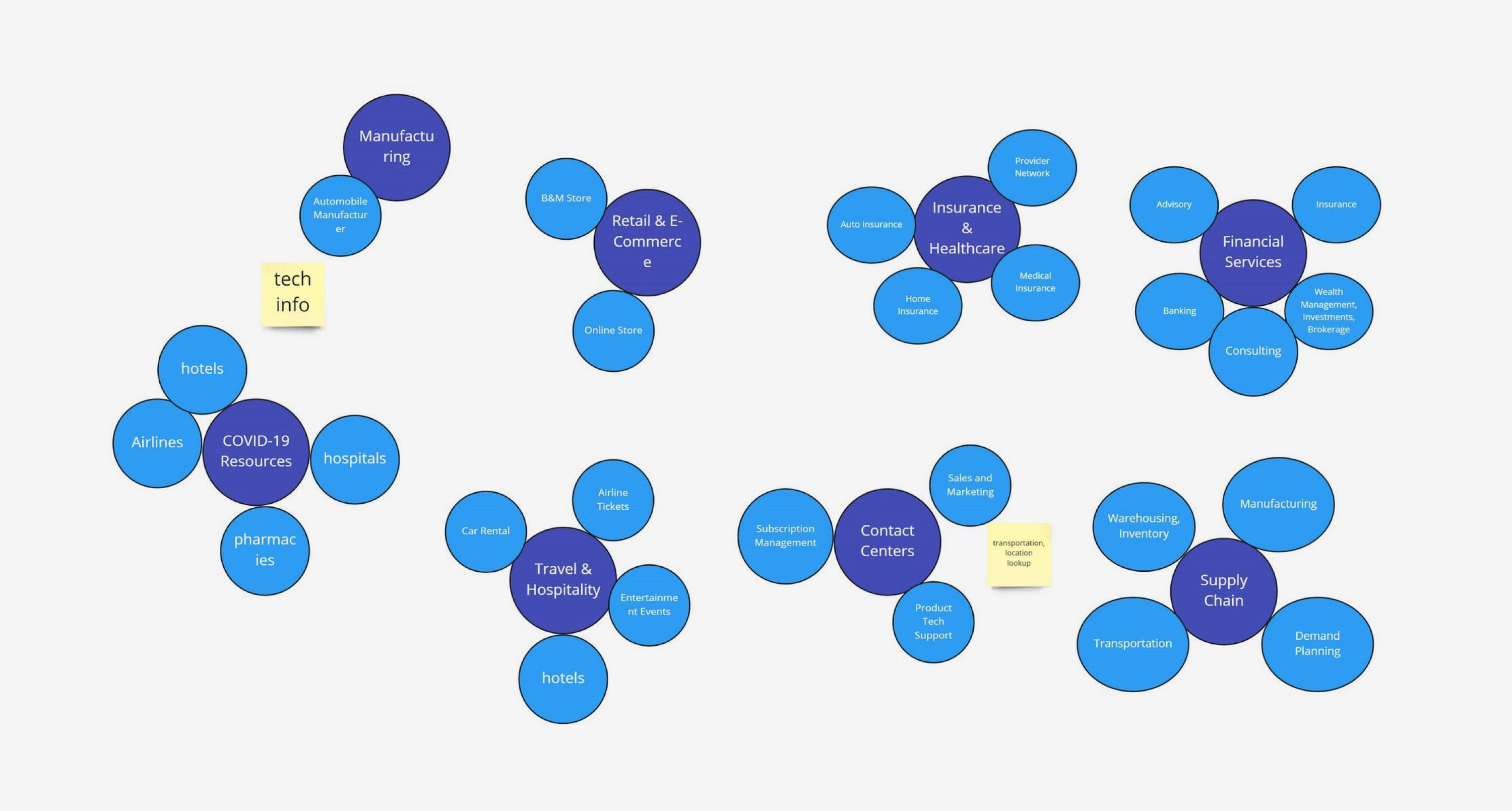
Studying user analytics and transcripts, I discovered a finding that first felt counterintuitive to me but later helped me determine the structure of the demo:
- Larger enterprises tend to prioritize the ease of use to build virtual assistants with limited resources, thereby relying more complex support from Rulai.
- Modest-sized businesses aim to start with more small-scale, straightforward solutions and get more hands-on with customization themselves.
Because of Rulai's new emphasis on obtaining parterships with smaller businesses, I decided to prioritize targeting their needs in the demo.
cookie-cutters can work well when coming in many shapes
Considering the needs of simpler solutions, I thought about using a set list of predetermined scenarios tackling common tasks for the demo. But this cookie-cutter approach won't address the demand for more freedom to fine-tune the assistants with customers' own data.
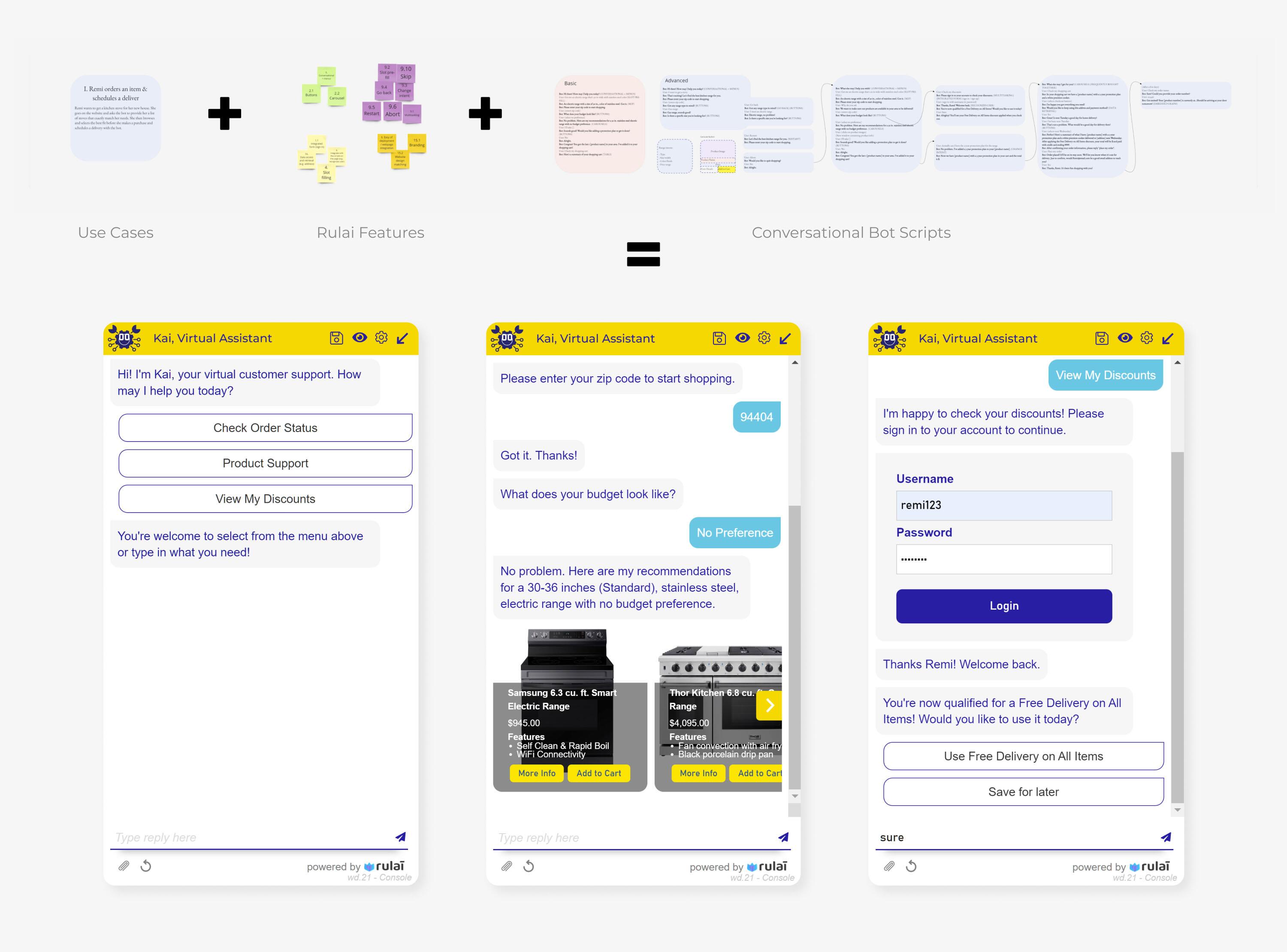
So I tried another approach on top of the cookie-cutter solution: breaking the demo structure into multiple independednt use cases. Each use case will focus on solving one user problem with a set of features, and audience can change up the problem and explore the process of tuning the assistant to adapt to the new constraints.
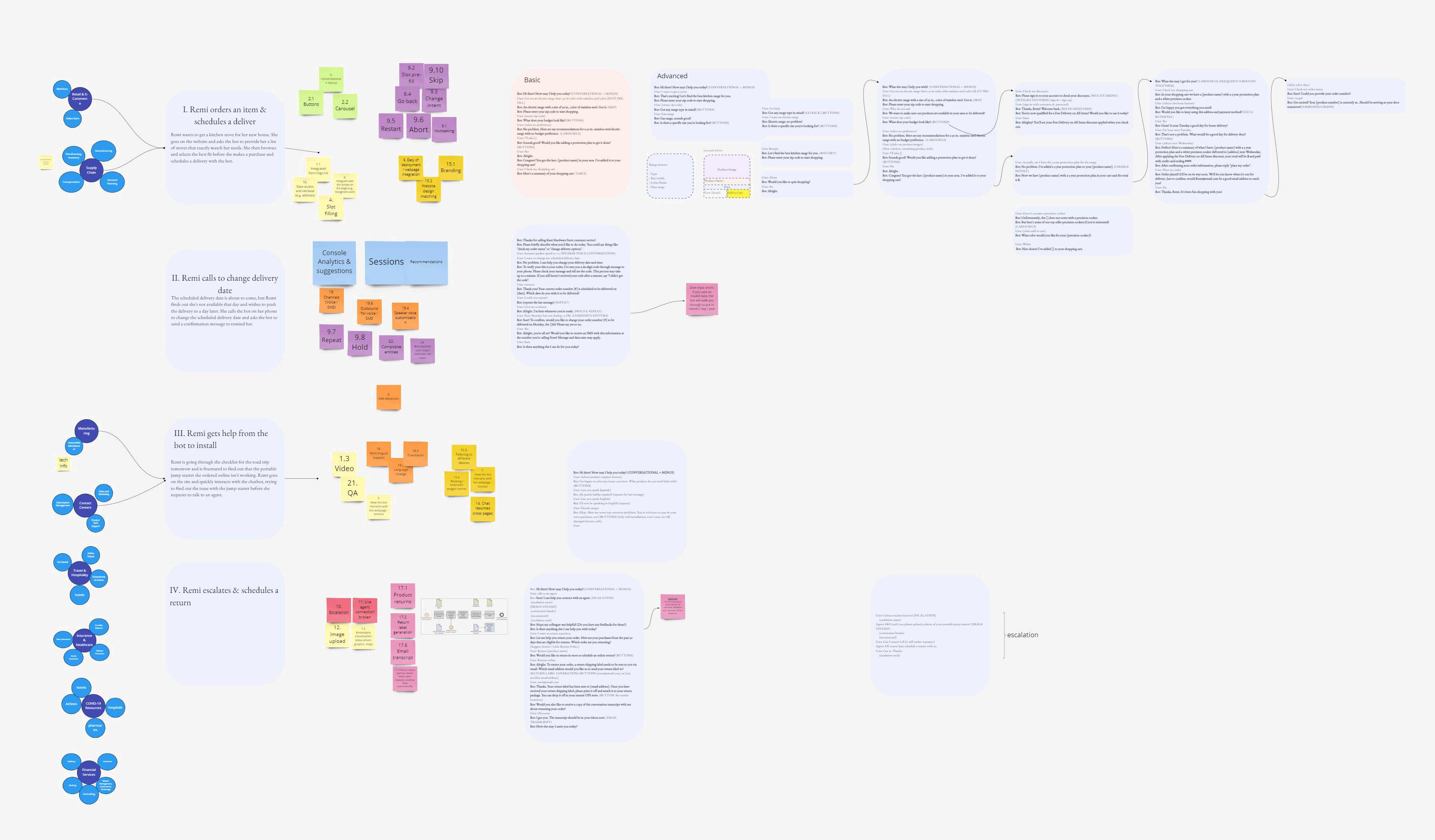
After implementing the first use case, our team presented a mock demo to the rest of the teams and executives. They ended up agreeing with the "transformable" cookie-cutters appraoch and gave us the green light to work on the rest of the demo!
little personality never killed nobody
When testing the rest of the use cases, I found out that taking the time to bring up the content fidelity can make demos much more convincing. I went back to brush up details in the first use case, giving personalities to the Virtual Assistant, expanding scripts for different user behaviors, and applying brand identity to the user interface.I learned to pay attention to terminologies and tones I use when delivering the presentation.

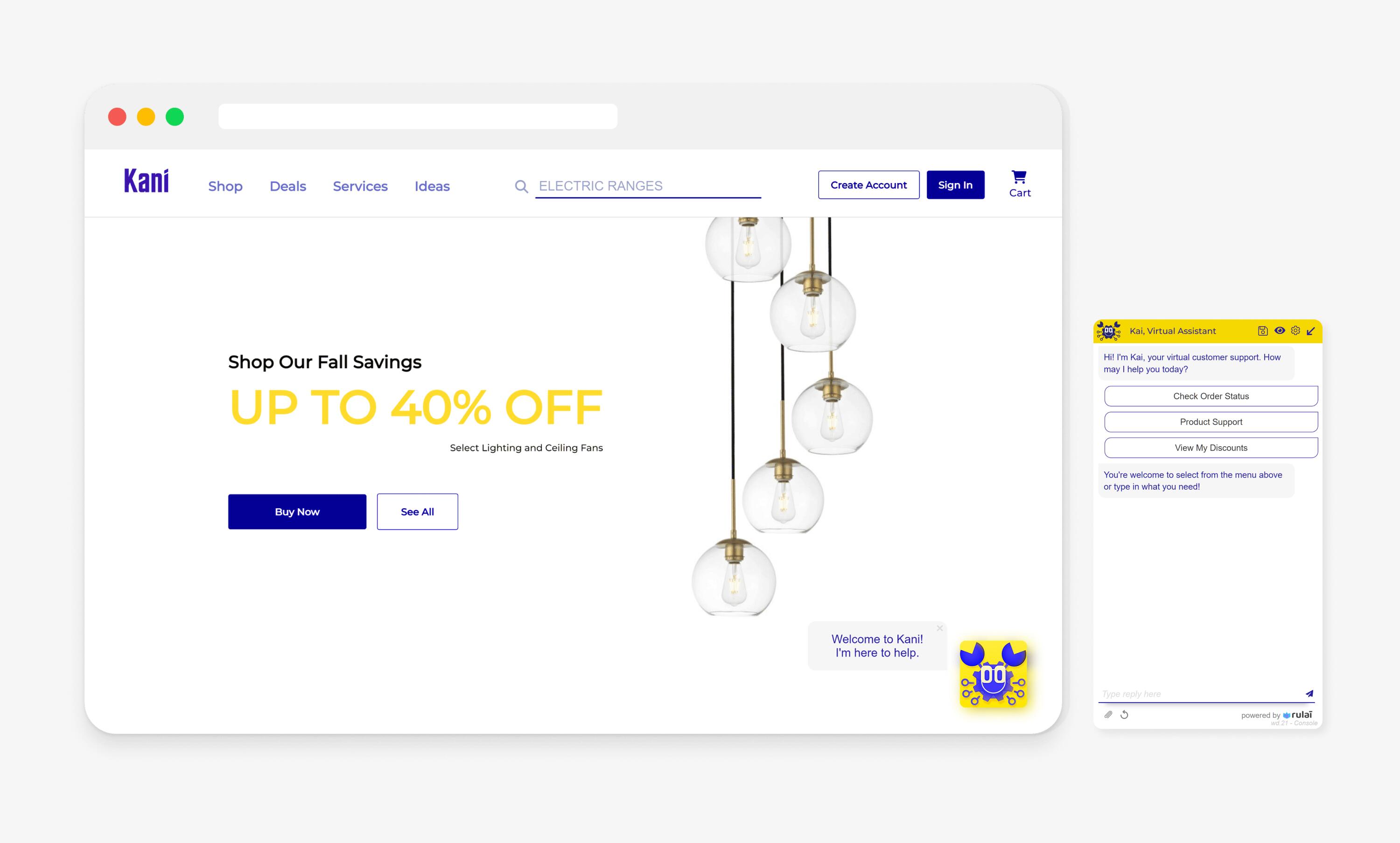
the result
integrated features to the demo system.
demo with presenter documentation at Rulai.
The Path